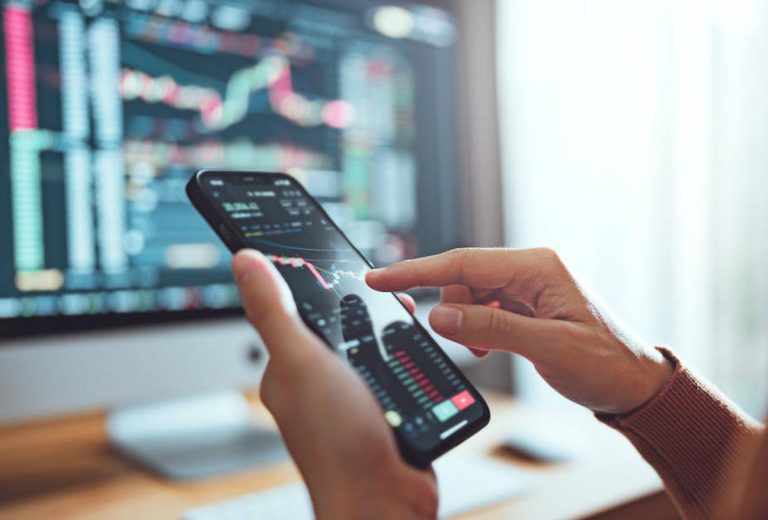Why did the price of gold and bitcoin soar in February 2024? Should we see in this concordance more than a coincidence, one after the other becoming a popular safe haven for individuals and soon for institutions, as the economic columnist from France Infos seemed to indicate?
Before attempting to provide some answers to this question, let us remember that, in general, our world is becoming inexorably digital. Apart from a few nostalgic people and other collectors, we no longer buy vinyl records or CDs. We download pieces of music, when we don't simply listen to them streaming. In the latter case, by paying a subscription, we can listen to a song without physically owning it. The numerous examples of this type constitute the backdrop to the changes also taking place in the financial world.
Let's go back a few decades, to a world of physical goods, where gold had long been considered THE safe haven par excellence. Holding gold meant being the owner of a particular asset, characterized by its rarity when acquired as well as the recognition of its value by many people and organizations. The gold buyer ran a low risk of not being able to resell his asset, even in periods of high volatility. Real estate, works of art and wine also claim the status of safe havens with more or less mixed success.
600% increase for the ounce of gold
Safe havens are stable assets, which very often make it possible to make a profit when resold. In 2000, the price of an ounce of gold was $300. In 2024, the ounce reaches more than $2,150, an almost uninterrupted increase of 600% with the exception of the years 2012-2013 and the year 2020. This property has a logical consequence: the safe haven secures the assets of its holders, including when political and economic conditions are unstable. This was particularly true until 1971, the year the convertibility of the dollar into gold was abandoned and the Bretton Woods agreements ended.
More volatile since then, the value of gold retains this property of safe haven in people's minds. It is not so much the stability of its value that is now at stake, but rather its materiality and its rarity. The symbolic has taken precedence over the economic.
So what about bitcoin? This particular asset has at least one thing in common with gold: its quantity is limited. It is surely no coincidence that we find a reference to gold in the founding “white paper” of Satoshi Nakamoto – the alleged inventor of bitcoin.
He recalls the work of miners regularly discovering new veins, a bit like new bitcoins being put on the market.
In the case of bitcoin, these potential discoveries are limited, since there will never be more than 21 million Bitcoins in circulation by the foreseeable horizon of 2140. This rule makes it potentially and intrinsically rare and soon valuable. Another similarity is that neither gold nor Bitcoin is controlled by governments or financial institutions that could set its value arbitrarily.
A direct system between individuals
These characteristics of bitcoin are linked to the conditions of its birth. Satoshi Nakamoto explained that he had created a system of direct electronic payments between individuals, without the need for a central authority like a bank or a government to produce trust. This system must preserve user privacy, resist censorship and guard against double spending, a common problem in unprotected digital systems. To achieve this, bitcoin uses a decentralized network and a public ledger of all transactions, known as a blockchain.
Still, there are notable differences between gold and bitcoin. The first, trivial, lies in the fact that gold is an asset with a physical reality, while bitcoin is a digital asset. Gold has a history of several thousand years, when bitcoin was new, just fifteen years. Its perception as a possible international currency is still developing. If gold is accepted throughout the world, this is not yet the case for bitcoin, even if its inventor thought of it in the era of the global digital network.
Another difference, which some consider to be a defect, lies in the fact that this inherently virtual asset has no intrinsic value. This ignores the value of trust and above all overestimates the value of gold as an industrial input. In fact, only 10% of global demand for gold corresponds to needs intended for manufacturers (medicine, electronics, aerospace).
Easy transport and transfer
Faced with these potential disadvantages, bitcoin has advantages: it is much easier to transfer and store than gold. It can be sent anywhere in the world instantly and almost free. Conversely, gold must be physically transported and its value requires it to be protected during transport, which is long and expensive.
We regularly read that the price of bitcoin is currently much more volatile than that of gold and therefore cannot claim the same status. The price of bitcoin has seen significant fluctuations over the years, ranging from a few cents to tens of thousands of dollars. This volatility certainly makes bitcoin risky for investors and users, but there is no evidence that this is an intrinsic characteristic. This could be very linked to the agitation specific to young age.
Talking about bitcoin as a safe haven can seem provocative as it is sometimes associated with a very speculative asset in the press. Certainly, but gold prices also vary. A safe haven can experience sharp fluctuations in times of uncertainty.
(More than 85,000 readers trust The Conversation newsletters to better understand the world's major issues. Subscribe today)
So, could bitcoin become the gold of the 21st?e century ? To answer this question, we must introduce a new dimension to our reasoning. Until now, we have considered the notion of safe haven in a context of easy access to finance, in a highly banked environment, which is far from being the case everywhere in the world. Bitcoin offers what gold cannot. For people with modest incomes who have the misfortune of living in countries that are neither a democracy nor a rule of law, bitcoin can be a refuge, especially since there is value-destroying hyperinflation there.
Bitcoin in a context of hyperinflation
The notion of safe haven is not the same depending on whether you are in New York or Paris, rather than in Caracas or Lagos. In the world, in 2023, there were 20 countries where inflation exceeded the rate of 20%, including Zimbabwe, Lebanon, Sudan, Argentina, Turkey and Venezuela. In 2019, inflation there exceeded 19,900% per year. Furthermore, this country is ranked 147e place out of 167 according to the democracy index established by the Economist Intelligence Unit.
In such a political-economic context, the question that arises is not the same as that which arises in a Europe where inflation at 4% is considered excessive. The impact of rising prices on the value of assets and on purchasing power is incomparable.
In the case of Venezuela, the value of a unit of local currency melts like snow in the sun. It is becoming obvious that Venezuelans, especially the most modest, are not going to use gold as a refuge. In 2019, a significant number of them bought bitcoins, in order to protect themselves against the hyperinflation that their currency was experiencing. That same year, the adoption of bitcoin in this country took a further step, with the acceptance by the food store chain Traki of payments in bitcoin, but also in other cryptocurrencies.
The comparison between bitcoin and gold today gives rise to very lively debates, but in a digitalized and globalized world, safe havens will necessarily have to adapt. Gold, certain works of art, luxury cars will not see their values collapse, but doesn't it seem fair that technology offers protection from political and economic vagaries to a greater number of individuals in coming years ?












+ There are no comments
Add yours